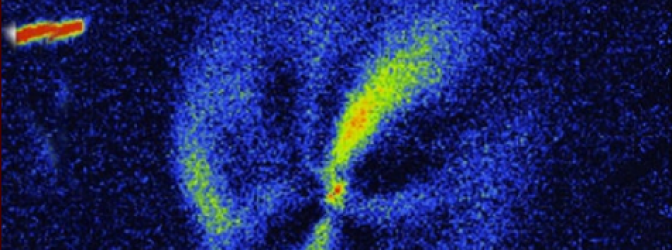Night sky guide for March 2014

Comet C/2012 X1 LINEAR will reach its brightest this month and will be well placed for observation on March 4. An extremely rare event will take place on the morning of March 20 when asteroid 163 Erigone passes in front of the bright star Regulus in the constellation of Leo, causing the star to disappear. No major annual showers are active this month as seen from the northern hemisphere and only a few very weak minor showers produce activity this month, according to AMS. From the southern hemisphere, activity from the Centaurid complex begins to wane with only the weak activity visible from Norma and perhaps others areas nearby.
March 1 – New Moon – 08:00 UTC. The Moon will position itself directly between the Earth and the Sun and will not be visible from Earth. This is the best time of the month to observe faint objects such as galaxies and star clusters because there is no moonlight to interfere.
March 4 – Comet C/2012 X1 (LINEAR) will reach its brightest at around mag 11.5 and will be well placed for observation. It will be 1.60 AU from the Sun, and 1.99 AU from the Earth.
March 13 – Gamma-Normids – 00:00 – 04:00 UTC. The gamma-Normids are active from February the 25th to March the 22nd, peaking on the 13th of March. Observing prospects are unfavorable for this shower in March due to the bright Moon. However, they are best viewed between 00:00 AM and 04:30 AM looking south-east towards the constellation Norma. Hourly rates are expected to be around 8 meteors per hour at the maximum. (SAAO.ac.za)
March 16 – Full Moon – 17:08 UTC. The Moon will be directly opposite the Earth from the Sun and will be fully illuminated as seen from Earth. This full moon was known by early Native American tribes as the Full Worm Moon because this was the time of year when the ground would begin to soften and the earthworms would reappear. This moon has also been known as the Full Crow Moon, the Full Crust Moon, and the Full Sap Moon. (Seasky.org)
March 20 – March Equinox – 16:57 UTC. The Sun will be above the horizon for almost exactly twelve hours at all latitudes. The word equinox is derived from the fact that on this day, all places on Earth have equal hours of daylight and night time.This is also the first day of spring (vernal equinox) in the Northern Hemisphere and the first day of fall (autumnal equinox) in the Southern Hemisphere.
March 20 – Occultation of Regulus – 07:07 UTC. An extremely rare event will take place on the morning of Thursday, March 20. An asteroid known as 163 Erigone will pass in front of the bright star Regulus in the constellation of Leo, causing the star to disappear. This event will be visible along a 45-mile-wide path and is predicted to begin at 07:07 UTC. The asteroid’s shadow will move on a southeast-to-northwest path that will extend from New York City to Oswego in New York State and continue northwest into Ontario, Canada. For those in the center of this path, the star will remain invisible for 12 seconds. (occultation path and information)
March 30 – New Moon – 18:45 UTC. The best time of the month to observe faint objects such as galaxies and star clusters because there is no moonlight to interfere.

Tonight's Sky: March 2014 – Video courtesy Hubble Space Telescope
Sky & Telescope's SkyWeek – March 2014 – Video courtesy Sky & Telescope
Featured image: 20 degree rotational gradient x2 scale image of Comet LINEAR X1 on October 26, 2013 (Credit: Nick James)

Commenting rules and guidelines
We value the thoughts and opinions of our readers and welcome healthy discussions on our website. In order to maintain a respectful and positive community, we ask that all commenters follow these rules:
We reserve the right to remove any comments that violate these rules. By commenting on our website, you agree to abide by these guidelines. Thank you for helping to create a positive and welcoming environment for all.